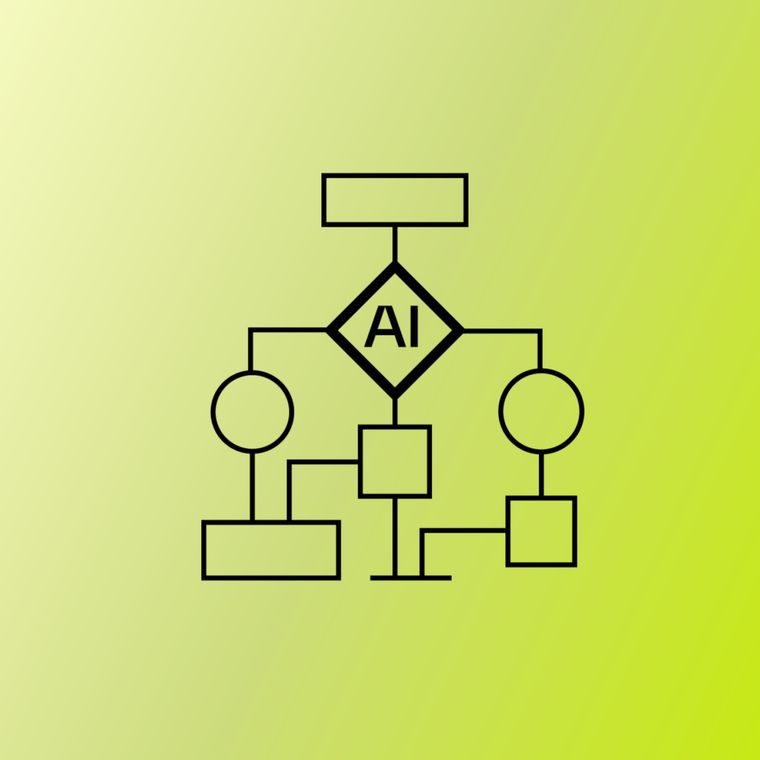How to Prevent Business Email Compromise That Costs Companies Billion Annually
Find simple ways to prevent business email compromise and protect your company from costly scams.
August 11, 2025
The FBI’s Internet Crime Complaint Center (IC3) of 2023 reported nearly $50 billion in exposed losses from business email compromise (BEC), a staggering reminder of how costly this threat has become. This figure is a sharp jump from $43 billion in 2022 and $26 billion in 2019. The growth is steady and alarming.
BEC is a targeted form of fraud where attackers infiltrate or impersonate trusted email accounts to trick victims into sending money or revealing sensitive data. These scams often bypass security tools by preying on human trust, using lookalike domains, hijacked accounts, or familiar display names. They are popular because they are easy to execute, deliver large payouts, and carry little risk for criminals. The growth of generative AI is making them even more convincing.
The trend is clear. Losses keep climbing despite more awareness. To stop BEC, organizations need more than basic email filtering. They need tools and strategies that can spot and stop these attacks before they succeed. Let’s begin by understanding what constitutes modern BEC attacks.
Understanding Modern BEC Attacks
Modern BEC attacks hide in plain sight by bypassing technical defenses and weaponizing highly tailored, multichannel social engineering against your workforce. Here are some of the main strategies:
Dropping the Phishing Markers
Traditional phishing leans on malicious links or attachments; modern BEC does not. Messages arrive as plain text, often in existing threads, and request routine actions such as updating payment details or expediting a wire transfer. Because they lack obvious indicators like malware signatures or suspicious URLs, native filters in Microsoft 365 and Google Workspace rarely flag them as threats, leaving end users to make the call.
Attackers amplify the illusion of legitimacy by spoofing display names, registering look-alike domains, or, when credentials are already stolen, sending requests from genuine mailboxes. Without a secondary verification channel, finance and procurement teams operate on trust alone.
Social Engineering Powered by AI
BEC gangs now base their pretexts on deep research into organizational roles, public filings, and social media. Verizon's latest Data Breach Investigation Report shows that pretexting now dominates social-engineering breaches, underscoring how attackers rely on believable storylines rather than technical exploits.
Generative language models accelerate this shift by crafting flawless prose, mimicking executive tone, and localizing slang, eliminating linguistic red flags that once alerted savvy employees.
Personal details, such as reference numbers, project names, and travel agendas, are inserted automatically, making each email feel like it was written internally. The result is a persuasive narrative that pressures recipients to act quickly while discouraging out-of-band confirmation.
Multichannel Pressure and Common Scams
Attackers rarely stop at email. A follow-up SMS that "the CEO is in a meeting" or a voicemail from a "vendor rep" reinforces urgency and keeps communication confined to channels the attacker controls.
Classic scenarios include executive wire fraud, "Approve this transfer before markets close", and vendor invoice fraud, where a compromised supplier account sends updated banking instructions moments before a bill is due. Each scheme exploits established workflows and hierarchical trust so that a single hurried approval can redirect millions.
Overall, today's BEC relies on trust, context, and speed. That said, recognizing those tactics is the first step toward building defenses that can keep pace.
Why Standard Email Security Falls Short
Standard email security solutions cannot defend against modern BEC attacks because these threats exploit legitimate business communication channels that traditional filters are designed to protect. Understanding why conventional defenses fail reveals the need for advanced behavioral analysis that detects anomalies within normal workflows.
Here’s the reason why standard email security falls short:
Signature-Based Detection Limitations
Legacy email security relies on malware signatures and reputation databases that identify known threats, but BEC attacks use pure text messages with no malicious links or attachments. Generative AI enables attackers to craft grammatically perfect, contextually appropriate emails that bypass traditional spam filters designed to catch the obvious phishing attempts.
Authentication Bypass Through Legitimate Accounts
Compromised executive or vendor accounts pass all SPF, DKIM, and DMARC authentication checks because attackers use stolen credentials to send messages from trusted domains. When the CFO's actual email account requests an urgent wire transfer, native security platforms cannot distinguish fraudulent communications from legitimate business requests.
Contextual Blindness in Pattern Recognition
Standard tools lack visibility into organizational communication patterns, such as which employees typically authorize payments, how executives phrase urgent requests, or established vendor relationships. Without behavioral baselines, security systems cannot flag anomalies like unusual payment amounts, timing irregularities, or communication style changes that indicate compromise.
Overall, modern BEC prevention requires adaptive analysis that understands identity, behavior, and intent rather than static rule-based detection.
The Three-Pillar Defense Strategy
Effective BEC prevention requires a comprehensive three-pillar defense that analyzes identity authenticity, behavioral patterns, and content anomalies to detect attacks before financial damage occurs. This layered approach creates multiple checkpoints that expose different attack vectors used in modern business email compromise schemes.
Let’s understand the three pillars:
Identity Analysis
Verify sender authenticity through strict email authentication protocols, including SPF, DKIM, and DMARC enforcement set to "reject" mode rather than monitoring. Combine authentication checks with sender reputation scoring and mandatory multifactor authentication on executive and finance accounts to prevent domain spoofing and credential-based attacks that bypass traditional verification methods.
Behavioral Monitoring
Establish baselines for normal communication patterns, including login geography, email timing, invoice amounts, and vendor relationships, to detect anomalies through machine learning analysis. When the CFO's account suddenly requests unusual wire transfers from a new location or changes established vendor payment details, behavioral analysis immediately flags these deviations as potential compromise indicators.
Content Evaluation
Deploy natural language processing to analyze email tone, urgency indicators, secrecy requests, and communication style changes that differ from the sender's typical patterns. Advanced content analysis detects sophisticated social engineering tactics, such as AI-generated messages that contain subtle manipulation techniques, out-of-band payment instructions, or pressure tactics designed to bypass normal approval processes.
This three-pillar framework creates interlocking security layers. Organizations implementing all three pillars significantly reduce successful BEC attacks and investigation response times.
Implementing Effective BEC Prevention
Stopping BEC attacks requires coordinated technology, streamlined processes, and engaged employees working together to detect and block sophisticated social engineering before financial damage occurs.
Here are the steps you can take:
Technology Foundation
API-based email security platforms integrate with Microsoft 365 or Google Workspace within minutes, analyzing messages without disrupting mail flow. Behavioral AI builds unique baselines for each sender and workflow, detecting subtle anomalies that rule-based systems miss. When threats are identified, automated quarantine and rollback capabilities remove malicious emails from all affected mailboxes while feeding alerts directly into existing SIEM and SOAR workflows.
Process Automation
Streamlined workflows eliminate manual bottlenecks by routing user reports to dedicated analysis queues and enabling organization-wide threat removal once attacks are confirmed. Integration with finance approval systems automatically pauses suspicious vendor payment changes until separate verification confirms legitimacy, preventing fraudulent transfers during the critical decision window.
Employee Engagement
Regular, role-specific training focuses on urgency indicators and payment redirections while providing one-click reporting tools with immediate feedback. When employees report suspicious emails, automated systems instantly confirm threat assessment and explain the decision, creating real-time coaching that sharpens detection instincts while reducing false positives.
This coordinated approach transforms BEC prevention from reactive incident response into proactive threat elimination that adapts to your organization's unique communication patterns and business processes.
The Human Factor: Addressing User Reporting
Employee phishing reports only become valuable intelligence when organizations close the feedback loop that traditional systems ignore. Most "report phishing" buttons create communication voids where employees submit suspicious emails but never receive acknowledgment, which discourages future participation and undermines human detection capabilities.
Modern automated triage systems instantly confirm receipt, explain threat assessments, and provide targeted coaching that maintains engagement while reducing analyst workload and capturing emerging attack patterns.
The following section explores how to implement comprehensive BEC prevention that coordinates technology, processes, and people across an entire organization.
Organizational Implementation
A successful BEC defense hinges on tight IT-security collaboration, a rapid API connection to cloud email, and a short proof-of-concept that validates accuracy before enterprise rollout.
Step-by-Step Deployment
Begin with a joint risk review that maps high-value workflows, past incidents, and mail flow architecture. Pick an API-native platform so you never reroute email. An API-based rollout typically takes six clicks and less than an hour to ingest historical mail from Microsoft 365 or Google Workspace. Next, launch a seven-day proof of concept that quarantines suspect messages while finance and executive users continue working uninterrupted. After tuning thresholds, expand the protection department by department.
Overcoming Common Challenges
Expect resistance when legitimate emails land in quarantine. Counter this by publishing a clear escalation path and committing to a 15-minute review SLA for flagged finance requests. False positives drop quickly as machine-learning models learn your communication patterns. Legacy secure email gateways can overlap with the new layer; phase them into monitor-only mode to prevent duplicate actions. With clear ownership, rapid connectivity, and iterative tuning, you lay the operational groundwork that allows the three-pillar defense to detect, verify, and neutralize BEC threats at scale.
Measuring Success and ROI
Demonstrating BEC defense value requires translating security metrics into business language that executives understand. Here are some key measurement areas you need to focus on:
Track Operational Efficiency
Measure analyst time savings by recording hours spent investigating suspicious emails before and after deployment. API-based automation eliminates manual mailbox searches and bulk remediation tasks, reducing daily queue processing from hours to minutes. Calculate hard-dollar savings by multiplying reclaimed analyst hours by fully burdened labor costs, including reduced overtime and contractor expenses.
Validate Threat Detection
Establish baseline metrics using historical quarantine logs and incident data, then track block rates, false positives, and detection speed post-deployment. Organizations with 1,000+ employees face 83-97% weekly BEC attack probability, making consistent reporting crucial. Document high-value saves like preventing wire fraud attempts to demonstrate direct financial impact alongside technical performance metrics.
Gauge User Engagement
Monitor user-reported phishing volume, report timing, and accuracy ratios to measure human layer improvement. Automated feedback loops increase participation while teaching threat recognition. Compare training completion rates and simulation performance to validate knowledge retention and behavioral change.
These operational, detection, and engagement metrics transform technical achievements into financial language that demonstrates clear ROI through documented time savings, prevented fraud, and enhanced workforce vigilance.
How Abnormal Security Addresses the $50 Billion Challenge
Abnormal uses a behavioral AI approach to fortify organizations against the losses attributed to Business Email Compromise attacks. This sophisticated defense strategy hinges on combining automation with intelligent detection methodologies, effectively curbing these threats.
Abnormal's three-pillar defense strategy of identity analysis, behavioral monitoring, and content evaluation goes beyond traditional email security by verifying sender authenticity through advanced protocols while leveraging behavioral AI. The platform's API-based integration with Microsoft 365 and Google Workspace enables deployment in minutes without disrupting existing workflows, while automated phishing report processing reduces manual oversight and increases detection accuracy.
Schedule a demo to see how Abnormal's behavioral AI platform can protect your organization from sophisticated BEC attacks.
Related Posts
Get the Latest Email Security Insights
Subscribe to our newsletter to receive updates on the latest attacks and new trends in the email threat landscape.


